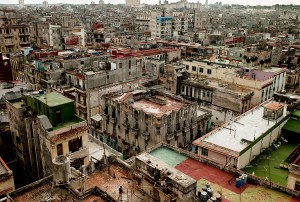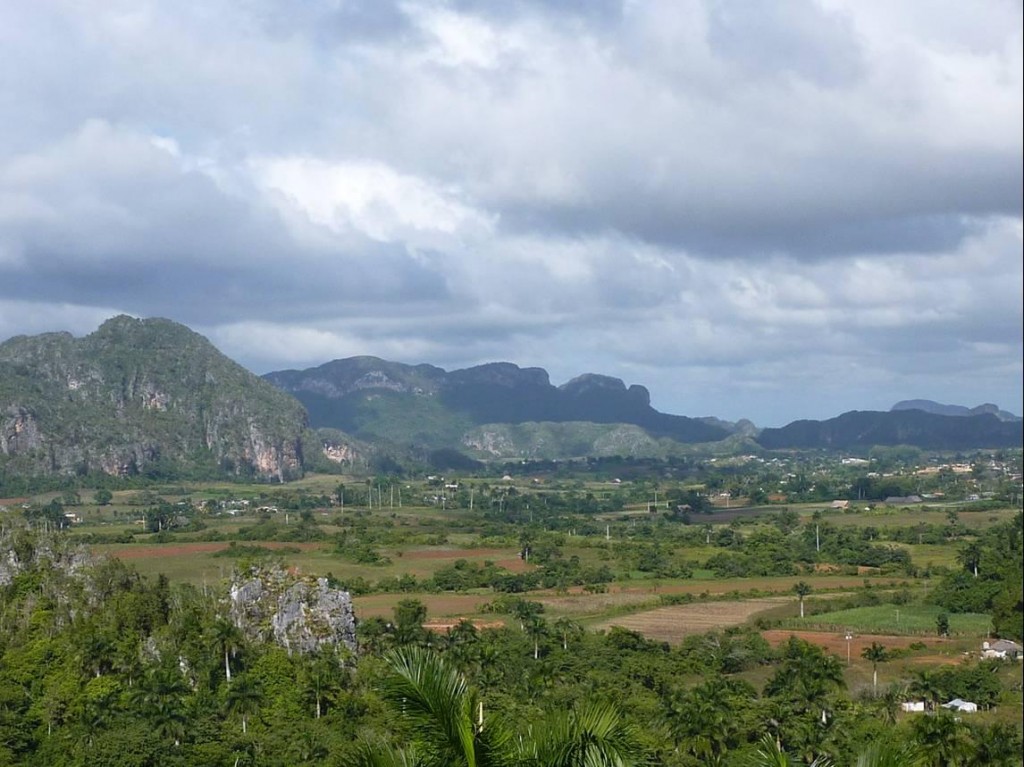Cuba must built annually between 60,000 and 70,000 homes to alleviate the housing shortage, one of the most serious social problems in the country , according to the National Housing Institute released a report Tuesday on state television , reported EFE.
At present, only some 16,000 houses are built each year as part of state plans and between 8,000 and 10,000 were built ” by the people ‘s own efforts ,” said the report .
The government usually routinely violate their housing plans .
The report noted that the housing stock in Cuba at this time is more than 3 million households, of which 61 percent rated in good constructive , while the rest are in fair or poor situation.
Housing is one of the main problems faced by Cubans and , according to the latest official data available , in 2010 the island had a deficit of about 600,000 houses , to which is attached the poor condition of many properties: a 8.5 out of 10 buildings on the Island needs repairs.
The president of the National Housing Institute , Oris Silvia Fernández , said the situation is ” very complicated ” in Havana , where 5,461 families are housed , and said that some 28,000 homes are needed to solve this problem.
The television report , entitled Cuba says , also noted that only in the last three years weather events such as hurricanes have affected more than a million homes on the island and that this circumstance has claimed focus on the damaged areas.
In this regard he cited the case of the province of Santiago de Cuba , which together with its neighbors Guantanamo and Holguin was hit Sandy devastating hurricane in October 2012 .
Sandy brought in these three provinces and 22,396 totally destroyed at the end of the first half of 2013 were still unresolved to 20,710 of these cases, in addition to another 40,000 of previous weather events , said the Minister of Housing .
The Government opened in 2010 the construction licensing and sale of materials released , and in May this year expanded the plan credits and subsidies to repair , maintain and build houses by their own efforts .
However, some of those interviewed on television program complained about not finding the materials they need at the point of sale and delivery of said land and premises for adaptation could be alternative to solve the problem.
In testimonies collected by independent and opposition journalists , mainly in Santiago de Cuba , have also revealed anger of the population from the sale of materials that the Government has received as a donation , slow in solving cases and the criteria used when award grants and loans.
DDC/Agencias/InternetPhotos/www.thecubanhistory.com
CUBA NEED to build 70,000 houses annually to covert dwelling deficit
THe Cuban History, Arnoldo Varona, Editor
CUBA NECESITA CONSTRUIR 70.000 VIVIENDAS ANUALES POR DEFICIT HABITACIONAL.
Cuba debe construir anualmente entre 60.000 y 70.000 viviendas para paliar el déficit habitacional, uno de los más graves problemas sociales existentes en el país, según datos del Instituto Nacional de la Vivienda divulgados este martes en un reporte de la televisión estatal, informa EFE.
En la actualidad solo se construyen unas 16.000 casas por año como parte de los planes estatales y entre 8.000 y 10.000 se edifican “por esfuerzo propio de la población”, indicó el reportaje.
El Gobierno suele incumplir rutinariamente sus planes de construcción de viviendas.
El reporte apuntó que el fondo habitacional de Cuba en este momento asciende a más de 3 millones de casas, de las cuales el 61 por ciento clasifica en buen estado constructivo, mientras que el resto se encuentra en regular o mala situación.
La vivienda es uno de los principales problemas que enfrentan los cubanos y, de acuerdo con los últimos datos oficiales disponibles, la Isla tenía en 2010 un déficit de unas 600.000 casas, a lo que se une el mal estado de conservación de muchos inmuebles: unos 8,5 de cada 10 edificios en la Isla necesita reparaciones.
La presidenta del Instituto Nacional de la Vivienda, Oris Silvia Fernández, explicó que la situación es “bien complicada” en La Habana, donde se encuentran albergadas 5.461 familias, y dijo que se necesitan unas 28.000 viviendas para resolver esa problemática.
El informe televisivo, titulado Cuba dice, también señaló que solo en los últimos tres años los fenómenos meteorológicos como los huracanes han afectado más de un millón de viviendas en la Isla y que esa circunstancia ha reclamado centrar la atención en las zonas dañadas.
En ese sentido citó el caso de la provincia de Santiago de Cuba, que junto a sus vecinas Guantánamo y Holguín sufrió el azote devastador del huracán Sandy en octubre de 2012.
Sandy provocó en esas tres provincias 22.396 derrumbes totales y al cierre del primer semestre de 2013 aún estaban pendientes de solución a 20.710 de esos casos, a los que se suman otros 40.000 de eventos meteorológicos anteriores, dijo la titular de Vivienda.
El Gobierno abrió en 2010 la concesión de licencias de construcción y liberó la venta de materiales, y en mayo de este año amplió el plan de créditos y subsidios para reparar, conservar y construir viviendas por esfuerzo propio.
Sin embargo, algunas de las personas entrevistadas en programa televisivo se quejaron de no encontrar los materiales que necesitan en los puntos de ventas y también dijeron que la entrega de terrenos y locales para su adaptación podrían ser alternativas para dar solución al problema.
En testimonios recogidos por periodistas independientes y opositores, principalmente en Santiago de Cuba, han revelado también enfado de la población por la venta de materiales que el Gobierno ha recibido como donación, la lentitud en la solución a los casos y los criterios utilizados a la hora de conceder subvenciones y créditos.
DDC/Agencias/InternetPhotos/www.thecubanhistory.com
CUBA NEED to build 70,000 houses annually to covert dwelling deficit
THe Cuban History, Arnoldo Varona, Editor



 CUBA NEED to build 70,000 houses annually to alleviate dwelling deficit (Photos) * * CUBA NECESITA construir 70.000 viviendas anuales por déficit habitacional (Fotos).
CUBA NEED to build 70,000 houses annually to alleviate dwelling deficit (Photos) * * CUBA NECESITA construir 70.000 viviendas anuales por déficit habitacional (Fotos).

